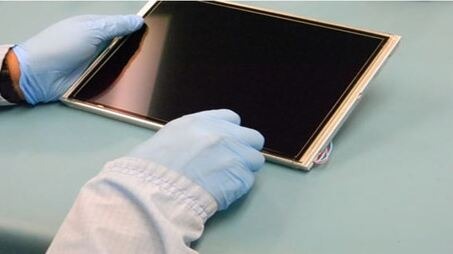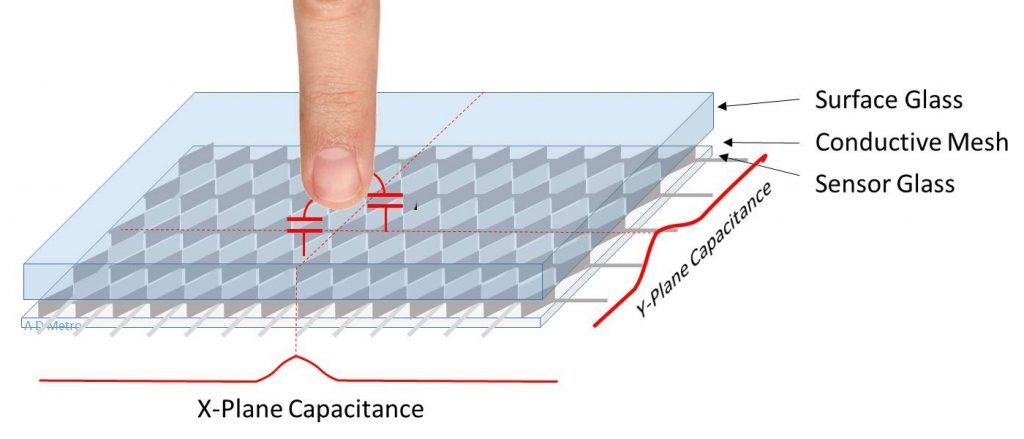Projected Capacitive (PCAP) touch screens offer the user friendly multi-touch experience, associated with smartphones and tablets, operating with very light touch through a highly durable glass surface.
A D Metro’s projected capacitive touch screen kits provide a high quality Glass on Glass sensor construction bundled with a discrete controller board, for commercial applications.
A D Metro’s PCAP innovations include a patented group controller, where a common controller serves a range of screen sizes to simplify design and reduce inventory costs. The controller offers USB-HID compatibility with major operating systems, simplified product development and accelerated time to market.

Projected capacitive touch screen sensors use two perpendicular layers of conductive coatings that form vertical and horizontal patterned tracks behind a glass top layer. When a finger is placed on the glass screen it changes the mutual capacitance between the horizontal and vertical patterned tracks. The controller scans each cell of the horizontal and vertical grid with a high frequency signal, identifying any changes in mutual capacitance between adjacent cells as touch locations.
For more information on popular touch screen technologies, please download our whitepaper.





1390 Star Top Rd.
Ottawa, Ontario, Canada K1B 4V7
Sales: sales@admetro.com
Support: support@admetro.com
1 800 463 2353 (US & Cnd)
Tel: +1 613 742 5545
Fax: +1 613 742 5245
Hours of operation:
Monday to Friday, 9am to 5pm EST
Copyright © 2025 A D METRO INC., ALL RIGHTS RESERVED.